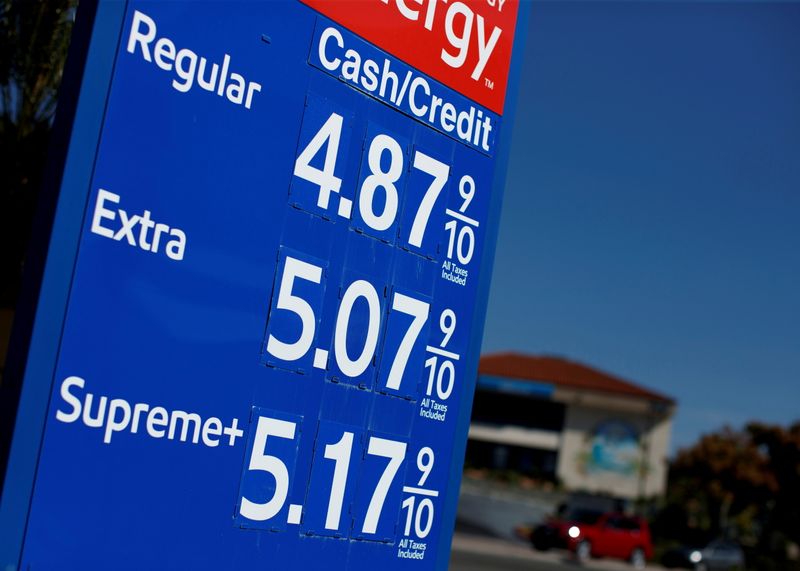(Reuters) -Rising geopolitical tensions across central and eastern Europe and climbing gas prices should keep markets on edge in the week to come.
U.S. shoppers gear up for Black Friday while investors will scour inflation data and Fed minutes for hints on the impact of price pressures on interest rates. And, just how far will Kiwi rates fly?
1/BLOWING HOT AND COLD
Russia-West ties have been at their frostiest since the Cold War for a while - but could they turn hot? Russia's Vladimir Putin says the West is not heeding "red lines" https://www.reuters.com/world/europe/putin-says-west-not-taking-russias-warnings-red-lines-seriously-enough-2021-11-18, warning against deploying NATO infrastructure in Ukraine. Russian troop movements at Ukraine's borders have led NATO to warn https://www.reuters.com/world/europe/nato-warns-russia-over-ukraine-military-build-up-2021-11-15 it was standing by Kyiv.
Ukrainian bond prices have slumped, Moscow's markets are waking up to fresh risk, Poland and Hungary have seen currencies and stocks fall hard. But much of the conflict is playing out on natural gas markets https://www.reuters.com/business/energy/russias-gazprom-feels-heat-over-europes-red-hot-gas-prices-2021-10-06, where a 350% price surge this year will fan inflation and hurt growth.
Markets are also on alert for tensions flaring around Russia's $11 billion Nordstream 2 pipeline, opposed by the U.S. and Ukraine, supported by Germany. A suspension of its certification saw Russian gas flows to Europe ease https://cn.reuters.com/article/europe-gas-prices-idCNL1N2S80JL, pushing prices back towards 100 euros a megawatt hour.
2/ UNEVEN BREAKEVENS
Minutes from the Federal Reserve's November meeting https://www.reuters.com/business/with-bond-buying-taper-bag-fed-turns-wary-eye-inflation-2021-11-03 on Wednesday should provide clues on its take on inflation.
U.S. consumer prices rising at the fastest pace in more than three decades in October and accelerating inflation expectations have lifted expectations that the Fed will need to speed up tapering of asset purchases https://www.reuters.com/article/marketsNews/idUSL1N2S91WK?il=0 and hike rates faster-than-expected.
The 5-year and 10-year breakeven rate - the yield spread between inflation protected and normal Treasuries - stand at record highs. More fodder comes from Wednesday's reading of the October personal consumption expenditures (PCE) price index - the Fed’s preferred inflation gauge - expected to rise to 0.4%, according to a Reuters poll.
3/RETAIL RODEO
Black Friday kicks off the key holiday shopping period https://www.reuters.com/business/retail-consumer/after-rally-us-retailers-investors-eye-upcoming-reports-2021-11-16 and news has been mostly good for retailers in recent months as a vaccine-fueled U.S. reopening sent shoppers back into stores.
That's been reflected in retailers' shares: The S&P 500 retailing exchange-traded fund is up 15% this quarter, compared with a 9% gain for the S&P 500. Consumer discretionary earnings growth - including many retailers - has risen to 14.5% from 8% at the start of October, Refinitiv data shows.
But global supply-chain bottlenecks crimping inventories and pushing up prices remain a worry: Walmart (NYSE:WMT) shares tumbled after high labour https://www.reuters.com/business/retail-consumer/walmart-sets-aside-supply-chain-worries-raise-annual-sales-profit-forecasts-2021-11-16 and supply chain costs ate into margins.
Soaring inflation also has markets worried about consumers tightening their belts. But recent retail sales numbers made for happier reading, showing October sales surging as Americans started shopping early to beat supply shortages.
4/ GROWTH VS COVID
The flash November purchasing managers' index (PMI), a key forward looking economic indicator, is due out from a host of major economies in coming days -- the United States, Australia, Britain and the euro area.
Market focus is on what impact price pressures and supply bottlenecks https://reut.rs/3nrR74g are having on business activity and whether these are abating. Euro area PMIs, which have held up well, could provide a sense of what toll a resurgent COVID-19 is taking.
Germany's Angela Merkel warns the coronavirus situation in the powerhouse economy is dramatic https://www.reuters.com/world/europe/germanys-coronavirus-situation-is-dramatic-merkel-says-2021-11-17, the Netherlands is in partial lockdown and pressure is mounting https://www.reuters.com/world/europe/austrian-covid-19-cases-keep-rising-provinces-prepare-full-lockdown-2021-11-18 on Austria to do more. But vaccine rollouts and the reassuring - and hefty - presence of ECB stimulus https://www.reuters.com/business/finance/ecb-must-be-ready-act-if-inflation-proves-more-durable-schnabel-2021-11-17 ease some of those worries.

5/A NOT SO FLIGHTLESS KIWI
The Reserve Bank of New Zealand is expected to move deeper into the vanguard of inflation fighters on Wednesday, and deliver a second rate hike in as many months. Since October, when the RBNZ joined Norway as developed https://www.reuters.com/business/finance/great-central-bank-exit-begins-norway-hikes-rates-2021-09-23 markets' first hikers, inflation has surged to a decade high and the unemployment rate has sunk to record lows. Traders are sure rates will go up, and are focused on two hawkish risks: A roughly 40% chance that the hike is a chunky 50 bps one, and the bank lifts its long-term rates outlook. Either could hoist the kiwi higher, though both bring risks to local borrowers already squeezed by the fastest pace of mortgage rate rises in 15 years.